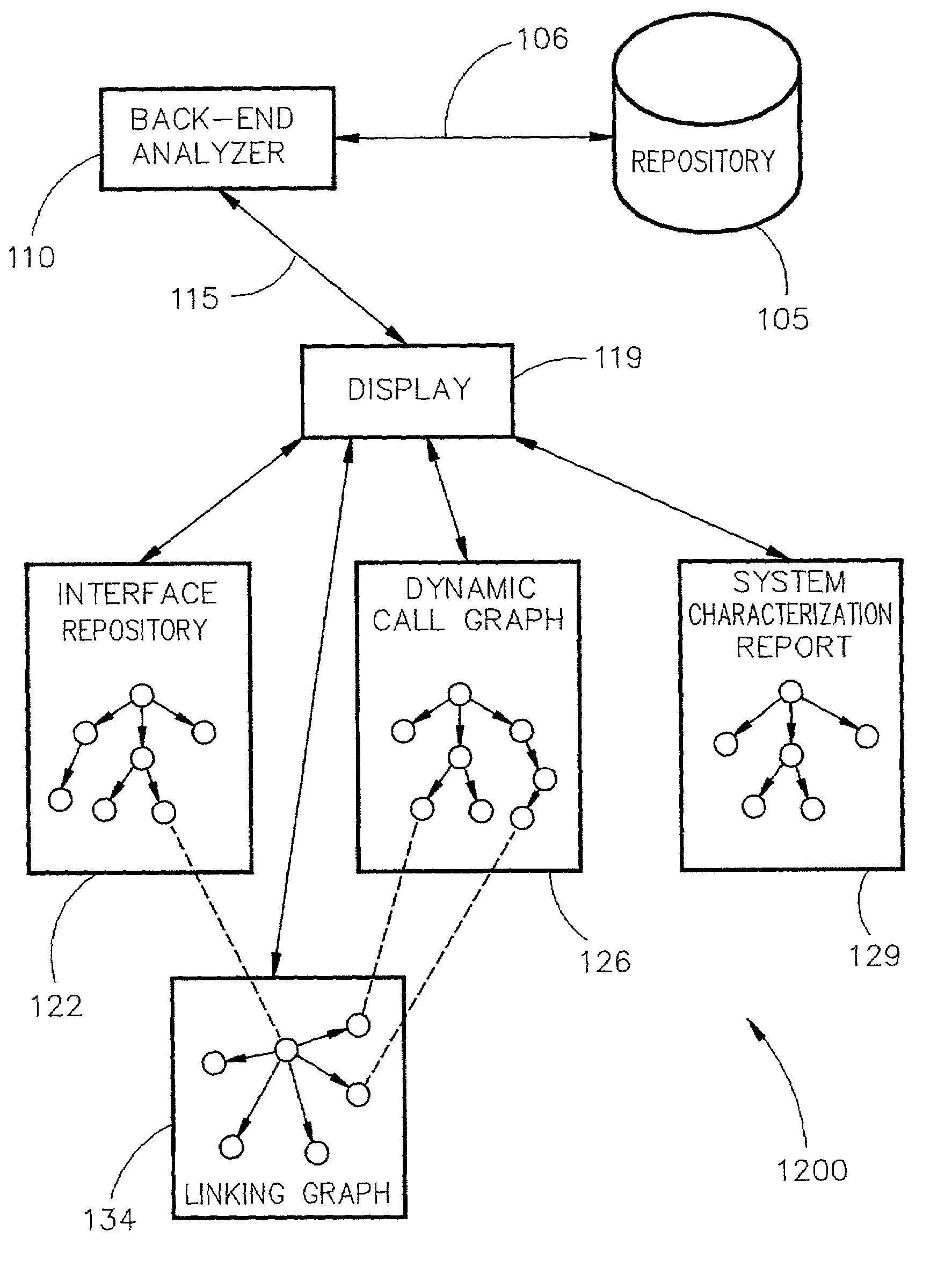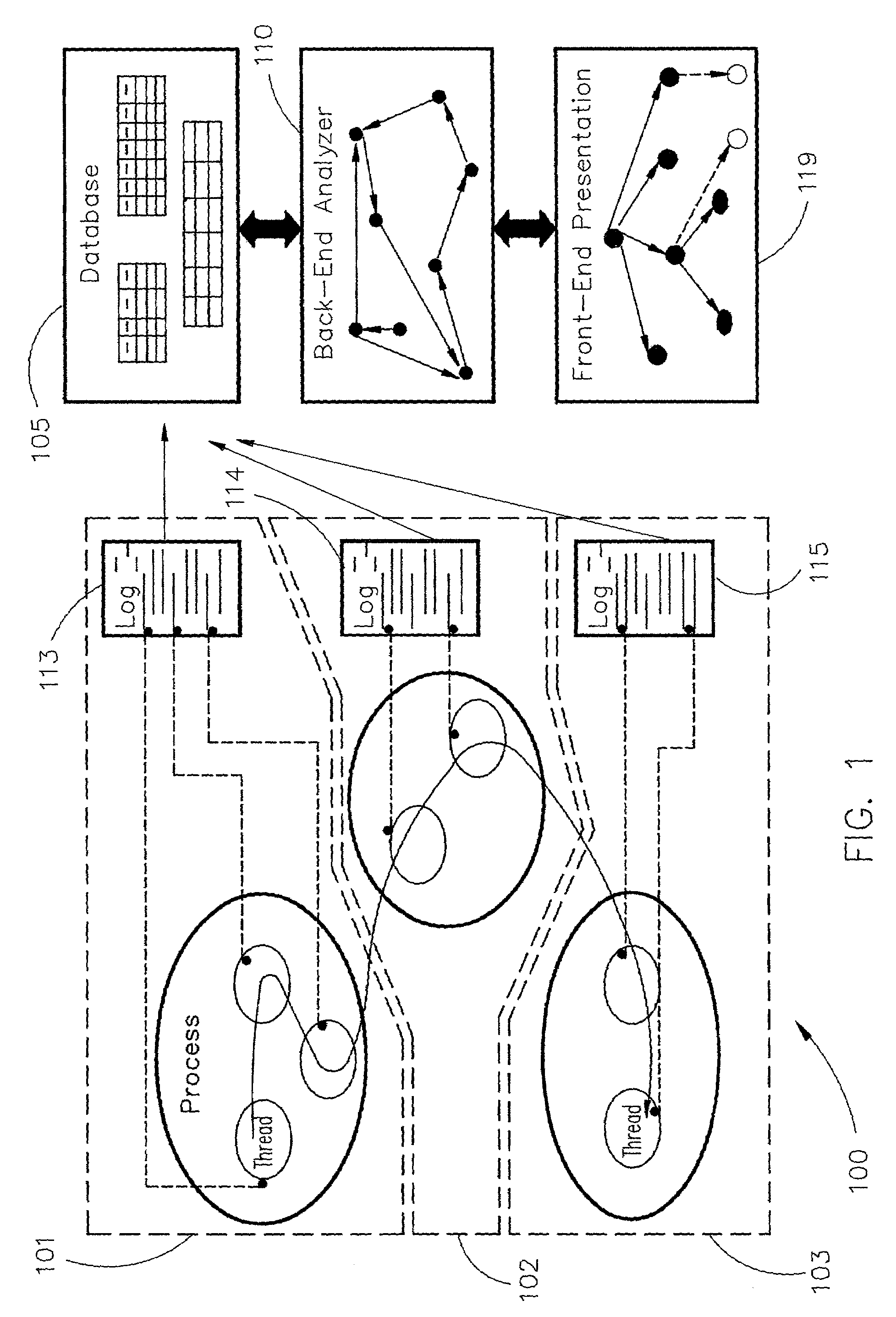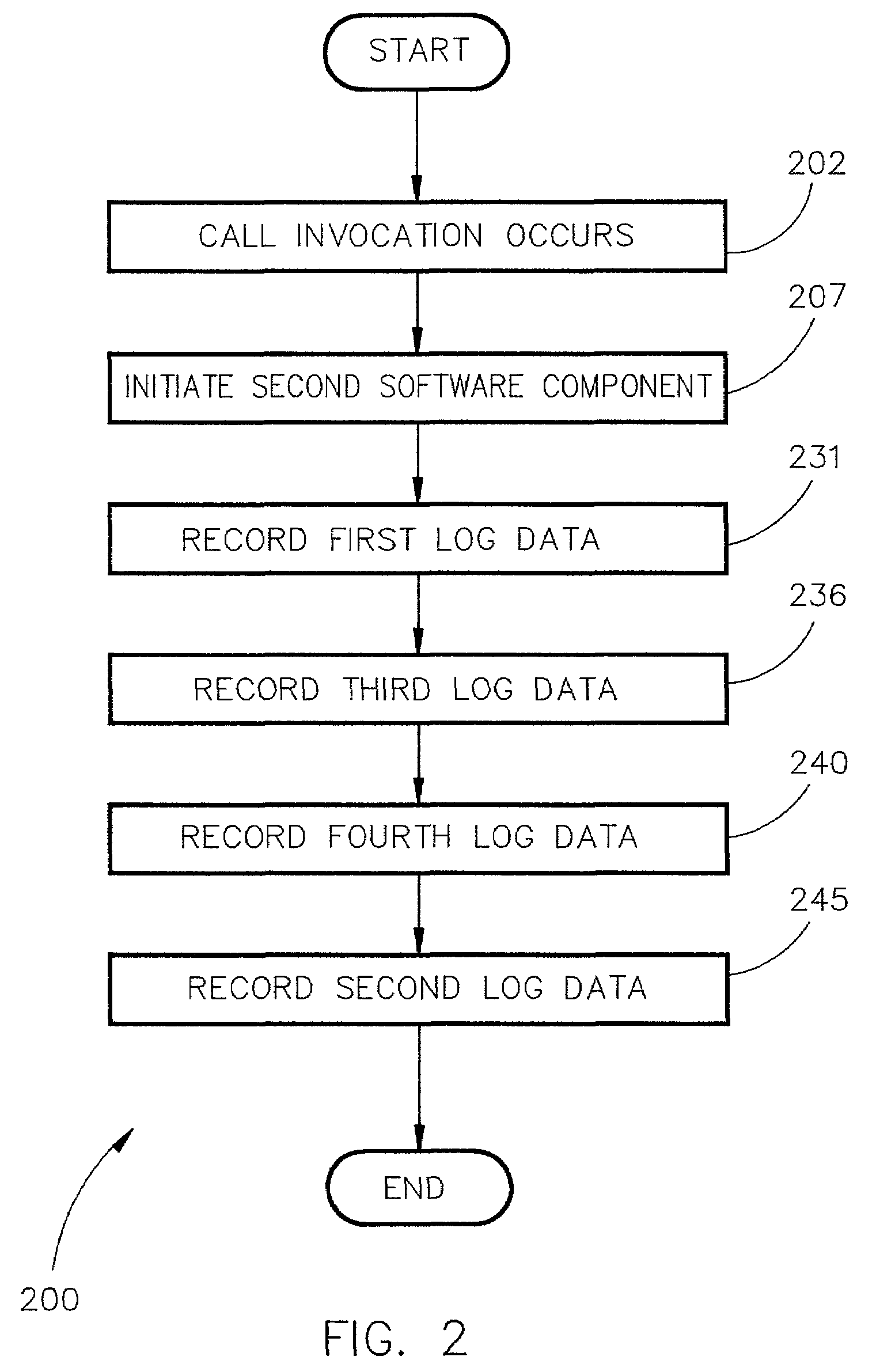Hyperbolic tree space display of computer system monitoring and analysis data
a computer system and tree space technology, applied in the field of runtime monitoring in a distributed computer system, can solve the problems of system debugging and understanding, multi-threaded programming model, and existing debugging and profiling tools are not suited to this distributed, and source code has to be written with logging in mind
- Summary
- Abstract
- Description
- Claims
- Application Information
AI Technical Summary
Benefits of technology
Problems solved by technology
Method used
Image
Examples
Embodiment Construction
Definitions
[0041]A distributed system is a loose configuration of computers or computer devices that are interconnected by one or more networks or network links. A distributed system may include devices that are remote from each other. The devices on the distributed system may transfer data among themselves and may call and execute applications on other devices. This is especially true of component-based software, in which a software application is composed of components that each perform a specific task and operate according to well defined interfaces.
[0042]A component-based software system is a composition of a set of interacting software components, each of which provides and requests service from other software components. Each component has a well-defined interface by which the component exposes its interface to other components. A component's interface, therefore, may be used to provide services to other components and is used by other components to obtain services. In a compo...
PUM
 Login to View More
Login to View More Abstract
Description
Claims
Application Information
 Login to View More
Login to View More - R&D
- Intellectual Property
- Life Sciences
- Materials
- Tech Scout
- Unparalleled Data Quality
- Higher Quality Content
- 60% Fewer Hallucinations
Browse by: Latest US Patents, China's latest patents, Technical Efficacy Thesaurus, Application Domain, Technology Topic, Popular Technical Reports.
© 2025 PatSnap. All rights reserved.Legal|Privacy policy|Modern Slavery Act Transparency Statement|Sitemap|About US| Contact US: help@patsnap.com



